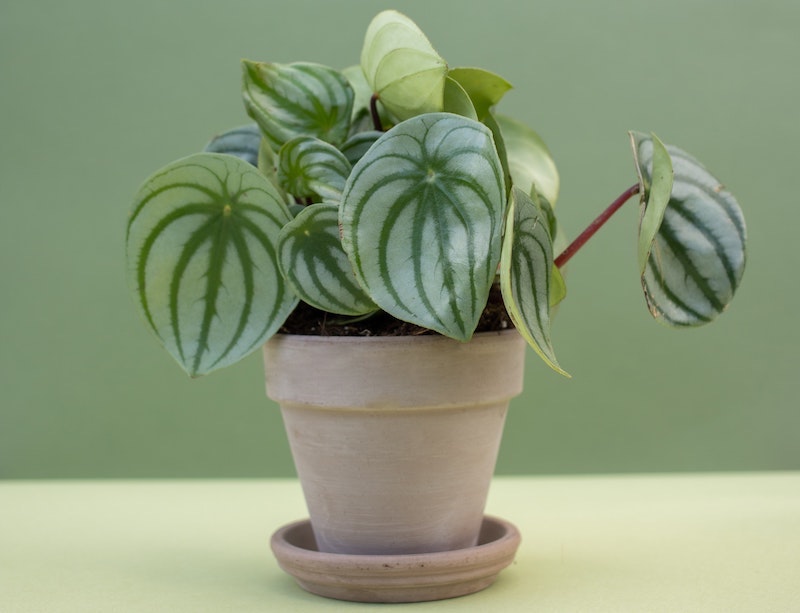Does that adorable Watermelon Peperomia sitting atop your desk need a new home? Did you buy it, and it's still in a nursery container? Or did you purchase it three years ago, and its roots are growing through the pot's drainage holes? Maybe you bought this perennial last year, and it's now begging you to transplant it from its plain terracotta vessel into a more vibrant and decorative container.
Or did you move that lamp one inch to the left and accidentally knock Peperomia to the floor? Regardless of why this evergreen needs a new pot, finding a new container and repotting it is relatively easy.

Potting Peperomia
Shortly after purchasing Peperomia, repot it in a new container about one inch larger than the plant’s root ball. The new pot should contain well-draining, loamy, slightly acidic soil and adequate drainage holes since Peperomia is susceptible to root rot. Next, treat Peperomia with insecticidal soap or horticultural oil to get rid of any pests that might have hitched a ride from the nursery to your home/office. Finally, quarantine this evergreen for two weeks. Quarantining means placing Peperomia in another room away from your other plants. After its separation, you can introduce it to the rest of your plant collection.
Repotting Peperomia
Several situations call for repotting Peperomia. These include overgrown roots, depletion of soil nutrients, a deficient container due to breakage or improper drainage, and a personal desire to change a color/style. Roots growing through the drainage holes are an indication Peperomia is rootbound. In such a case, carefully remove the plant from the pot and, using a sterilized garden knife, cut downward to trim the roots, cutting about 25% of their length. Then, remove the darkened roots while preserving the healthy white ones. Finally, loosen the remaining roots with your fingertips before repotting Peperomia into a new container filled with loamy, well-draining, slightly acidic soil. Water the new planting well.
If your Peperomia is not rootbound but needs to be repotted, the process is even more straightforward. Select a pot one to two inches larger than the previous, and fill it with loamy, well-draining, slightly acidic soil. Water the soil and roots thoroughly.

Best Soil For Peperomia
Provide Peperomia with soil that retains adequate moisture. The ideal soil would be loamy, well-draining, and slightly acidic. A typical houseplant potting soil amended with perlite to improve aeration will suffice. A cactus potting mix amended with coco coir is another good option.
Peperomia Drainage
A pot’s ability to properly drain prevents root rot and aids aeration and salt removal. A pot with one or more holes will drain adequately for Peperomia. However, if your heart’s set on a container with no holes, don’t worry. Plant Peperomia in a smaller pot with drainage holes and place this vessel into the container. This tactic and using saucers prevent containers from staining cement patios.
 |
Author Suellen Barnes - Published 3-21-2023 |
